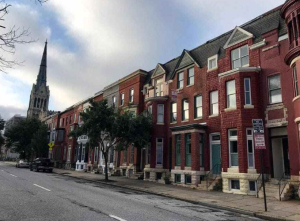Introduction
Section 8 investing can be controversial and have a stigma associated with it. People say it’s too risky, and that Section 8 properties are run down and undesirable. This is not always the case.
In fact, the HUD provides attractive incentives to interested landlords, and many apply to the program each year. Here are some of the biggest pros and cons associated with being a Section 8 landlord.
The Pros
Guaranteed Rent Payments
When you rent to tenants in the Section 8 program, the government guarantees that you will receive at least 70% of your tenant’s monthly rent payment via direct deposit straight into your bank account. Also, the local public housing agency (PHA) will work with each Section 8 family to ensure that whatever lease they enter into is not above their price range, so you can rest assured that your tenants can reasonably afford the remainder of their rent payment.
Higher Demand
Each year, the number of families who qualify for Section 8 Housing outpaces the number of Section 8 units available. This means that landlords are not likely to experience difficulty finding tenants to occupy these properties. In fact, there are usually waitlists of people who are desperate to move into a Section 8 unit. Accepting housing vouchers is a good way to ensure that you don’t have high rates of vacancy.
Regular Rent Increases
To compensate for increasing rent inflation, local PHAs allow generous Section 8 rental rates increases each year. Sometimes, Section 8 rental rates exceed market rates for normal properties in that area.
Free or Cheap Marketing
Marketing and advertising your units can be a large expense for landlords. Luckily, when you are accepted into the program by filing a Request for Tenancy Approval (RFTA) form with the HUD, you will be connected to listing opportunities and ways to market your property. You can also list your property for free on Affordablehousing.com.
Take Part in Reducing the Housing Crisis
Perhaps the most rewarding part of embracing Section 8 housing is knowing that you’re helping renters who are in desperate need of affordable housing. High rents mean that lower-income workers don’t have as much access to safe, sanitary housing. It’s important that market rental rates allow individuals at multiple income levels to live in safe and reliable housing.
The Section 8 housing program also tries to integrate those who benefit from the program with traditional renters to reduce the ideas many people have about what affordable housing looks like. Being a part of something meaningful is a great way to increase your satisfaction in your job and to be more motivated when completing the day-to-day tasks of being a Section 8 landlord.
The Cons
Bureaucratic Red Tape
The Section 8 program is government funded and operated. Government programs tend to have many forms, contracts, and other kinds of paperwork that you must fill out carefully to participate. Some examples of necessary paperwork are a Request for Tenancy Approval (RFTA) form and the Housing Assistance Payments (HAP) Contract. Navigating the red tape and bureaucracy included in being a Section 8 landlord is a large hurdle for many people, but if you have enough patience and motivation to do so, it will be rewarding for both you and your tenants.
Less Control
With traditional real estate investments, landlords generally can choose rental rates for their property alongside any necessary repairs or renovations without having to consult anyone else. However, with the Section 8 program, you are not the only person responsible for determining rates or repairs, nor can you decide which families are eligible for housing within your units. While landlords generally do have a say in the rental rate they set, it must be approved by the PHA. What a landlord cannot do in texas regarding the rental rate? In order to make sure landlords fulfil their duties to maintain rental property repairs, it is against the law for them to raise rent, threaten to evict a tenant, or purposefully neglect to renew a lease within six months of the tenant’s complaint.
HUD Delays
Some government agencies suffer from staffing issues, and the HUD is one of them. Understaffing tends to lead to delays when processing documents or inspecting units. Most of the time, landlords will not get their first PHA rent deposit until 30 to 60 days have passed following a successful inspection. If your inspection revealed that the property needed repairs, you would have to start the process over again and wait even longer.
Security Deposit Concerns
The uncertainty of security deposits when renting to Section 8 tenants can be a nonnegotiable issue for some interested investors. Although PHAs provide tenants subsidies for rent, they do not always give subsidies for security deposit payments, so it is not likely that your tenant will be able to pay the amount you choose. You are allowed to ask for the tenant to pay their deposit, but there is no guarantee you will be able to collect it from them.
Less Profitable for High-Value Properties
If you are a landlord who traditionally invests in high-value properties, Section 8 may not be for you. The PHA is not likely to set a rental rate that is anything close to traditional, private market rates for high-value properties. If you are expecting similar profit from these properties, you should look for other real estate opportunities.
Conclusion
Investing in Section 8 housing has its cons, but the biggest advantage to doing so is providing safe and affordable housing to deserving families. Consider the Section 8 benefits and disadvantages above before making your decision.

